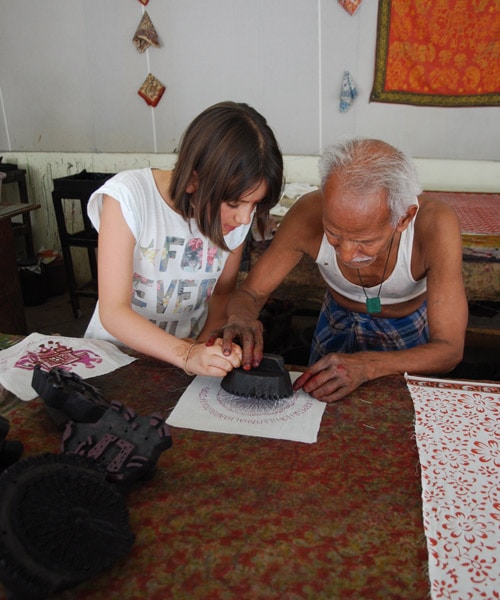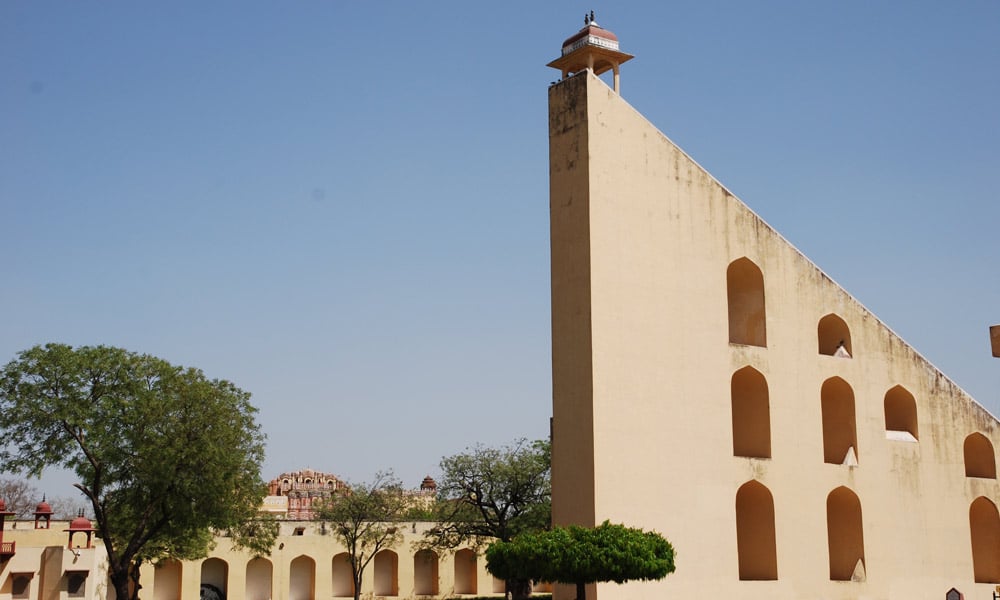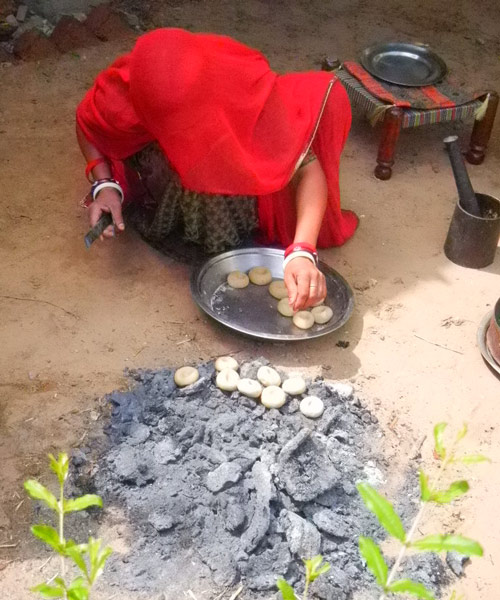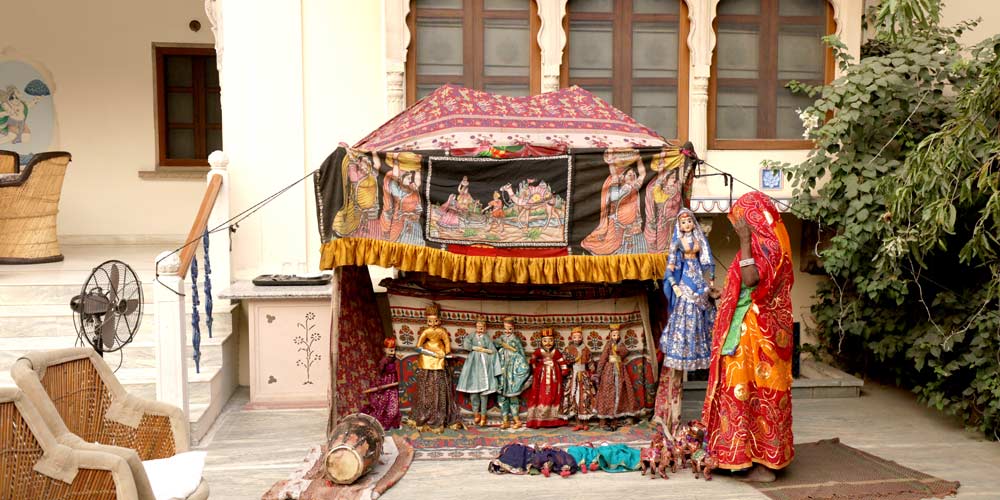Family Travel editor, Jane Anderson and family explore the wonders of the Pink City of Jaipur

Exploring the Amber Fort
If ever there was a city to tingle your children’s senses, it’s the Pink City of Jaipur. The capital of Rajasthan was founded in 1727 by Raja Jai Singh II, to replace the hill fort of Amber, some 11 miles away. Long before the perpendicular avenues of Manhattan, this once modern city was planned on a grid system with wide boulevards. It was painted pink for a visit by the Prince of Wales in 1876 who later became Edward VII, as it was his favourite colour. How insane it that!
We begin our exploration in the safe hands of Bhopal Singh, our experienced guide with an impressive mustache and mirror shades, who proudly tells us he’s from the warrior caste and explains to Scarlett and Fin that locals don’t get bitten by the mosquitos as they’re full of chillies!
We begin with the vast Amber Fort, a breathtaking World Heritage Site that was home to the royal family until 1727 during the rainy season when the surrounding lake was full. Now government owned, it was opened to tourists in 1957. There are lines of elephant rides going up to the palace, but we’re warned that the animals are not always treated so well, so we head up on foot.
The scale of the fort is overwhelming. With over 7km of wall, it’s like a mini Great Wall of China, so it’s best to take it in bite-sized pieces especially with children. Bhopal leads us first to Shila Devi Temple, with solid silver doors and inside the statue of Kali, the Hindu goddess – both gentle mother and fierce warrior. It’s quite an intense experience in this relatively small temple, with worshippers ringing the head-splittingly loud bell to pray. On the wall is a picture of Kali wearing a necklace of men’s heads.
Another highlight is the Hall of Mirrors which took 11 years to build and was finished in 1639. With literally millions of tiny pieces of mirror set in plaster of Paris, in elaborate designs, and inlaid marble, Bhopal asks us to imagine what this place would have looked like at night, without the hundreds of tourists, lit with oil lamps, all the mirrors giving the illusion of stars. He also explains how the Hall of Mirrors had 17th century air conditioning created by water tanks in domes above the building trickling water through fragrant grass curtains. When the breeze caught the wet curtains it turned the 47 degree temperature outside to a pleasant 26 degrees inside.

The steep climb to the Amber Fort

Block printing at the Shree Carpet & Textile Mahal
We leave the fort and head into the walled city to the Shree Carpet and Textile Mahal. Here we get to see Mr. Khan in his rolled up white vest, demonstrate the art of block printing. He shows us the callouses on the outside edge of his hands after 52 years of banging the wooden blocks down on the fabric. He seems happy to be showing us, and the intricate pattern he’s working on is mind blowing. There are just five natural dyes: spinach (green), turmeric (yellow), saffron (orange), indigo (blue) and henna (red). Patterns are created with a minimum of four blocks and a maximum of nine.
When we go into the shop, we’re shown dozens of beautiful bedspreads. Scarlett and Fin both choose a soft single cover for about £40 each in the spinach and indigo combo of colours, Scarlett opting for flowers and Fin for elephants. A lovely reminder of their India trip.
The City Palace is another must-see in the centre of town with its royal carriages, oversized silver urns big enough to get your entire family inside, and the kings’ elaborate outfits including summer and winter polo gear.

Mr Khan guides Scarlett in the art of block printing

Jantar Mantar, Jaipur’s giant outdoor observatory
But it’s Jantar Mantar that really captures our imaginations. This giant’s observatory was completed in 1734 and remains an impressive measurement of the position of the constellations, the exact time of day on the world’s biggest sundial and instruments to see which Zodiac sign the sun is on. We’re told that in India, astrology is still revered. Dates will be set when your starts are aligned for important dates like getting married.
Our most magical evening in Jaipur is spent at Dera Mandawa, home of attentive host, Durga Singh. The beautiful old house was his aristocratic family home, now made into an atmospheric Mughal-style boutique hotel.
Durga greets us as ‘honourable visitors’ and takes the time to tell us that when he was a boy, the house was surrounded by jungle where panthers roamed. As the city of Jaipur expanded, the conurbation grew up around them. Despite this you can still get a sense of how it used to be with the lush vegetation in the garden and the effort Durga puts into preserving Rajasthan traditions. As he points out, non of the classic invaders of India from Alexander the Great onwards have made as much impact as the invasion of the digital age.

Scarlett finds her star sign at Jantar Mantar
In the afternoon you can try out kite flying and turban and sari tying along with an Indian style high tea. But tonight, Durga and his wife, Usha Kumari, invite us into their garden for a game of char-bhar, a board game played in rural India, as staff light a fire on the ground made of dried cow dung. The birds are cheeping and there’s a Muslim call to prayer as the evening draws in, and over the fire are buried a dozen bread rolls among the sterilized embers. We’re soon enjoying our rolls with spicy dhal and meaty mutton kebabs. Usha takes us to a cooking station in the garden and has us creating Bangan Bharta – big aubergines roasted on a flame, peeled, mashed and cooked with masala.
Durga leads the children over to a miniature stage where an elderly lady in a bright red sari sits on the ground with her drum providing the sound track to her husband, Kanaiyalal Ji’s traditional puppet show. The large string marionettes include a dancing lady in a sari, a man on his camel, and a most impressive, a man on a horse with a flaming torch. There are brutal fight scenes in the best tradition of puppetry and afterwards the children are invited to have a go. Fin does a very decent job of making the woman belly dance and we all agree Jaipur and its traditions are precious things.

Cooking in dried cow dung at Dera Mandawa

Traditional puppet shows at Dera Mandawa
Jaipur is usually explored as part of a wider trip around northern India.
Audley Travel offers a 12-day tailor-made itinerary through northern India including four nights at Me to We Araveli Cottages and Tented Camp where families work with the local community with all meals and experiences, one night at a beautiful countryside retreat in Shahpura, two nights in Jaipur, one night in Agra and two nights in Delhi (all B&B) from £3,995 per person based on four travelling (two adults, two children), sharing two rooms. Includes private, guided excursions in each destination, international and one domestic flight as well as a private vehicle and driver throughout.
Tips
If you’re nervous of travelling to India with kids, book with a tour operator such as Audley who look after you every step of the way yet give you the freedom have genuine experiences and discoveries.
Visit your GP six months before travelling to check up on what immunisations you all need and get them done well in advance of travel.
The best time to go
From October to March after the monsoon and when the desert sun isn’t so intense.